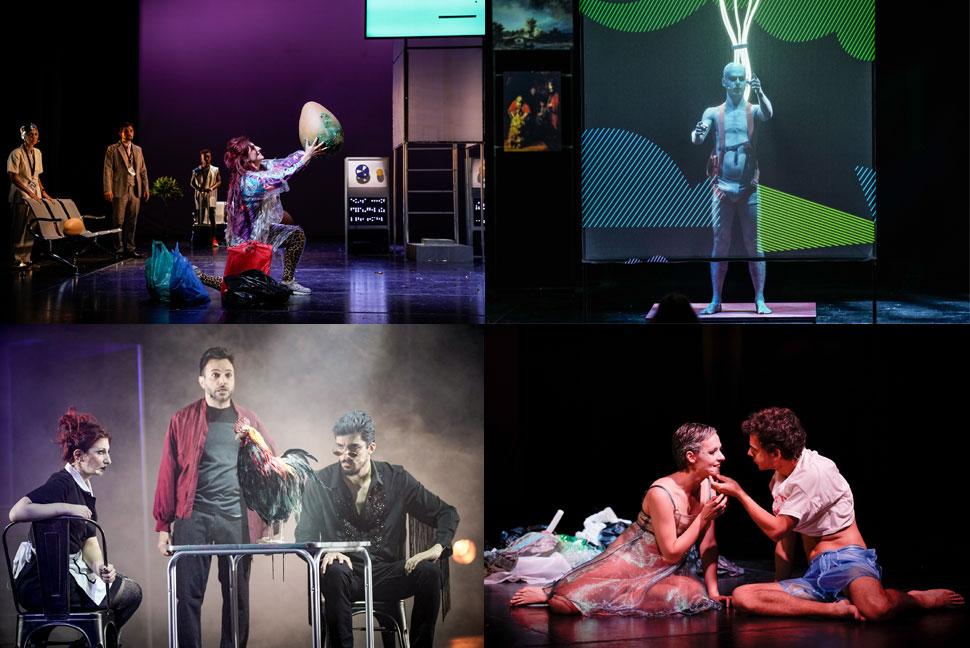Tredici secondi
o Un bipede implume ma con unghie piatte
composer Marco Benetti
librettist Fabrizio Funari
La Meccanica del Colore
composer Nuno Costa
librettist Madalena dos Santos
Trashmedy
composer Alessandro De Rosa
concept and librettist Mimosa Campironi
sound design Mimosa Campironi, Alessandro De Rosa
Ab Ovo
composer Talya Eliav
librettist Liron Barchat
stage direction Francesca Merli (Tredici secondi o Un bipede implume ma con unghie piatte / Ab Ovo)
stage direction Pablo Solari (La Meccanica del Colore / Trashmedy)
conductor Matthieu Mantanus
Ensemble Novecento dell’Accademia Nazionale di Santa Cecilia
electronics CIMM - Centro di Informatica Musicale e Multimediale della Biennale di Venezia
computer music design Maurilio Cacciatore, Simone Conforti
set design Maddalena Oriani (La Meccanica del Colore, Trashmedy)
set design Davide Signorini (Tredici secondi o Un bipede implume ma con unghie piatte, Ab Ovo)
light design Moritz Zavan Stockle
make-up Anna Lazzarini
costumes Davide Signorini and Francesca Merli (Tredici secondi o Un bipede implume ma con unghie piatte, Ab Ovo)
costumes Maddalena Oriani (La Meccanica del Colore, Trashmedy)
props Cecilia Sacchi (Ab Ovo, Tredici secondi o Un bipede implume ma con unghie piatte)
video animation Michele Zangirolami (La Meccanica del Colore), Ehsan Mehrbakhsh (Ab Ovo)
répétiteurs Marina D’Ambroso, Alessia Toffanin
production La Biennale di Venezia
in collaboration with Accademia Nazionale di Santa Cecilia
